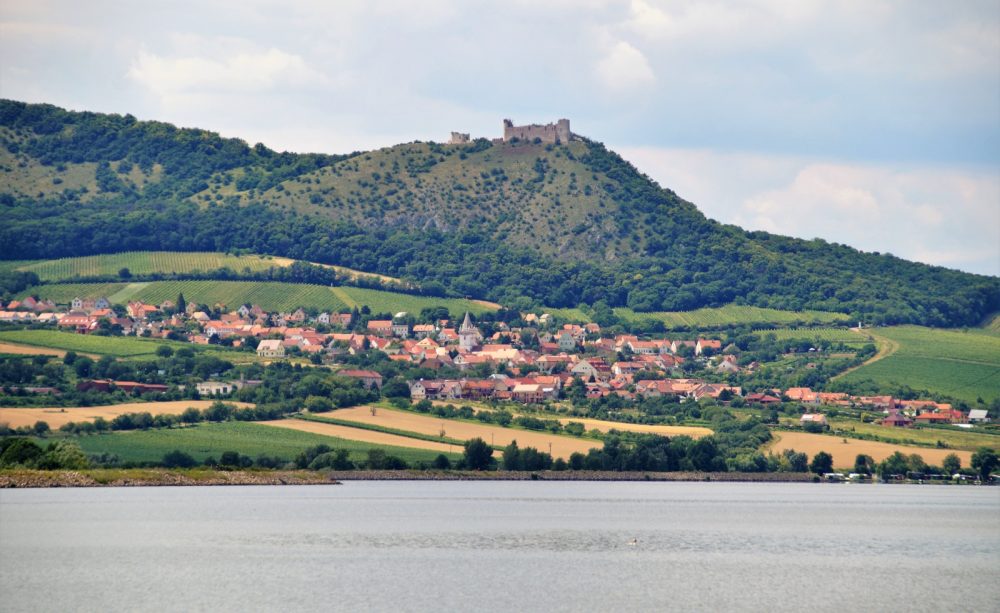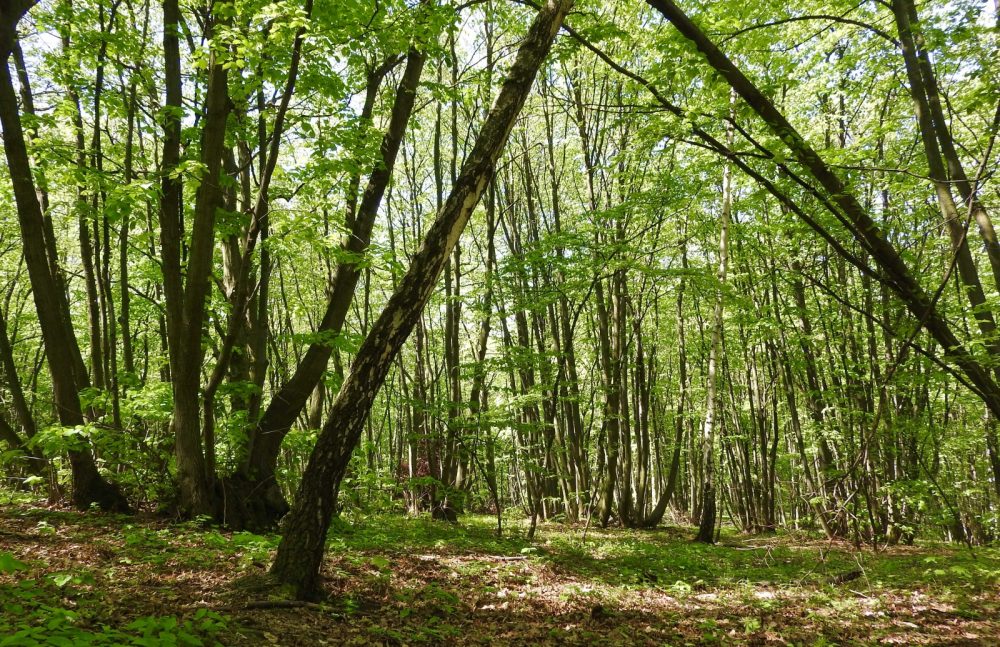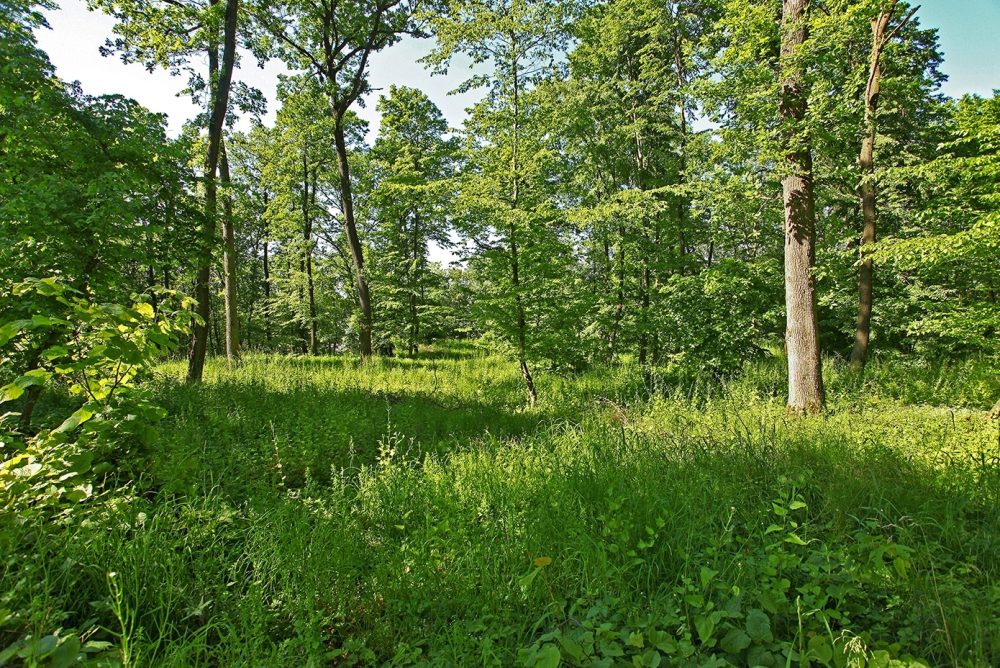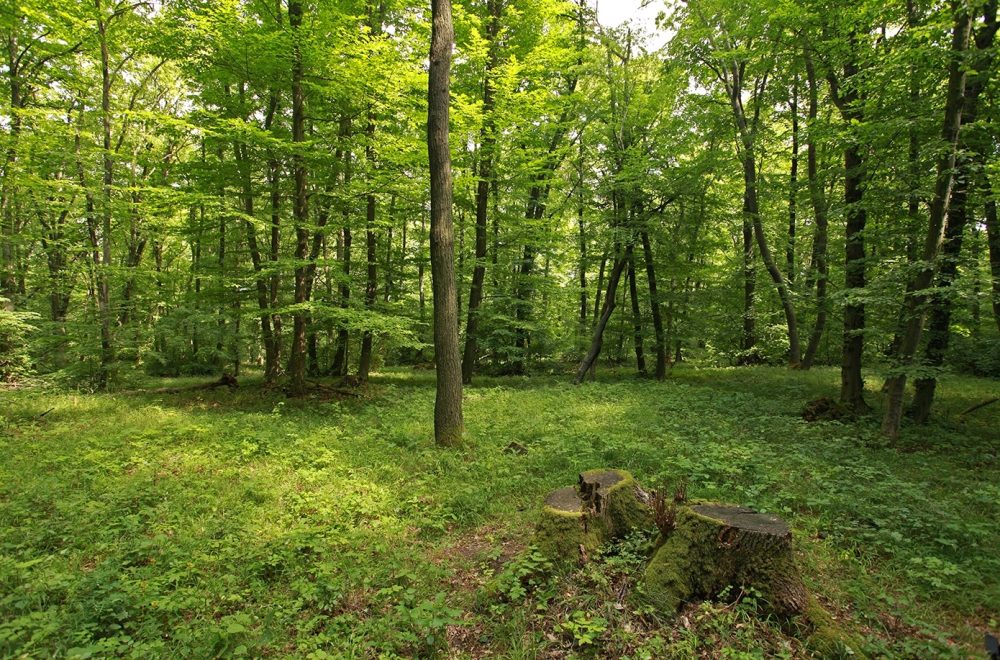Canopy thinnings in lowland forests support biodiversity
Forests in the lowlands, most often oak and oak-hornbeam forests, are important not only due to their forestry production use, but also due to important non-production functions, especially high biodiversity. However, in recent decades, it has faced a severe decline in biodiversity due to inappropriate forestry practices, such as intensive logging with mechanical soil preparation or the abandonment of traditional forest management, which was dominated by sapling management, in the past.
Above all, in protected areas, there has been a homogenization of plant communities and a change in habitat conditions, which become darker, wetter and richer in nutrients. Overgrowth of biotopes creates unsuitable conditions for the development of thermophilic and light-loving plant communities, which have been bound to these biotopes for centuries. This manifests itself in the gradual loss of individual species of plants, fungi and animals adapted to these conditions.
 Photo: Protected area Pálava, National Nature Reserve Děvín
Photo: Protected area Pálava, National Nature Reserve Děvín
During the last decades, originally heterogeneous forest stands consisting of different types of habitats have developed into relatively homogeneous, dark high forests. These changes in habitat management led to a drastic reduction of biodiversity on a landscape scale. In particular, the biodiversity of arthropods typical of open light forests has decreased significantly.
The negative impact of abandoning traditional forest management on biodiversity is documented mainly in protected areas by a number of studies focusing on vascular plants, butterflies, ground beetles, weevils, spiders, diptera and half-diptera (dimidium-diptera), and birds. All studies recommend a return to traditional management, including stump management, which creates a dynamic mosaic of sites of different age and light, supporting biodiversity.
Scientists from the Mendel University in Brno, the Botanical Institute of the Academy of Sciences of the Czech Republic and the Palacký University in Olomouc focused on epigeic spiders (living on the soil surface) during their research of the biodiversity of lowland forests. They then published the results in the article Canopy thinnings as a return to the traditional coppicing supports the diversity of ground-dwelling spiders /Prosvětlování lesů jako návrat k tradičnímu výmladkovému hospodaření podporuje diverzitu epigeických druhů pavouků/, which was published in the journal Forest Research Reports 2/2022.
Spiders are important and mostly non-specialized predators of other arthropods, thereby significantly contributing to maintaining the ecological balance of nature. In forests, they are strongly bound to the conditions of microhabitats and they react very quickly to changes in the forest undergrowth. Spiders are also suitable site indicators, because many rare and endangered species are linked to open and semi-open habitats, such as thermophilic oak
 Photo: Coppice forest in National Nature Reserve Děvín
Photo: Coppice forest in National Nature Reserve Děvín
The main goal of the research was to find out the effect of varying intensity of canopy thinnings of stands on the diversity of spiders in the National Nature Reserve Děvín (Protected area Pálava), where coppicing management has ceased more than 80 years ago. The experimental canopy thinnings started in 2009, it was the first step towards the restoration of cuttings management, and therefore a return to traditional management in these culturally and biologically extremely valuable forests.
The hypothesis that the intensity of canopy thinnings will be positively correlated with the diversity of spider communities, was then verified. Canopy thinnings in forest stands and the resulting higher heterogeneity of habitats will lead to the promotion of the coexistence of both non-forest species and typical forest spider species, and therefore there will be higher species richness.
In the investigated area, there are forest communities presented by linden and oak stands, together with oak-hornbeam stands and thermophilic oaks. Among the dominant tree species, there are still surviving old reserved sessile oaks, in the lower storey of the former coppice individuals, there prevail large-leaved linden, supplemented by ash, hornbeam and field maple, Norway maple and sycamore maple.
The surrounding landscape belonging to the Protected area Pálava is relatively heterogeneous with different types of habitats (xerothermic lawns, vineyards, orchards and agriculture fields). From these habitats, rare and endangered species of organisms can colonize coppiced lightened forest areas.
 Photo: Forest stand after intensive canopy thinning, National Nature Reserve Děvín, author O. Košulič
Photo: Forest stand after intensive canopy thinning, National Nature Reserve Děvín, author O. Košulič
In total, there were captured 3,683 adults belonging to 21 families, 70 genera and 116 species. From them, 811 individuals (48 species) were found on control plots (without thinnings), 1815 individuals (65 species) on plots with moderate canopy thinnings, and 1057 individuals (85 species) on plots with strong canopy thinnings.
Out of the total number, 23 species (20%) were found belonging to higher level of threat in the Red List of spiders of the Czech Republic. Most of the Red List species preferred habitats with strong stand opening. Also, the highest number of species was found on strongly opened areas. The degree of rarity was also highest with strongly opened stands. The results of the research show that the highest biodiversity associated with the occurrence of rare and endangered species of spiders is in strongly opened tree stands. An important element is the spatial structure of these habitats, which was created by thinnings of stands being related to the intensity of the incident sunlight.
So, returning to the active management of tree species is more than desirable for the preservation of the biodiversity of protected areas, but not on the entire area. It is important that the territory forms a diverse mosaic of habitats, where sophistically opened parts of stands with the initial stage of succession will be combined with shady untouched stands that would offer a suitable refuge for species requiring appropriate ecological conditions.
 Photo: Forest stand after medium canopy thinning, National Nature Reserve Děvín, author O. Košulič
Photo: Forest stand after medium canopy thinning, National Nature Reserve Děvín, author O. Košulič
It is necessary to understand active canopy thinnings and restoration of coppice management positively and not negatively, even if they happen in a protected area that should be characterized by non-intervention.
The renewal of active forest management is the result of cooperation between the Nature and Landscape Protection Agency of the Czech Republic (represented by the Pálava Protected Area Administration), the state enterprise Lesy ČR and research organizations (Academy of Sciences of the Czech Republic, represented by the Botanical Institute of the Academy of Sciences of the Czech Republic).
The paper Canopy thinnings as a return to the traditional coppicing supports the diversity of ground-dwelling spiders can be downloaded here.
Authors of the paper: Pavla Vymazalová, Ondřej Košulič, Tomáš Hamřík, Jan Šipoš, Radim Hédl, e-mail: ondra.kosulic@seznam.cz
Prepared by: Ing. Jan Řezáč, FGMRI, e-mail: rezac@vulhm.cz
Introductory photo: Forest stand managed by coppicing way in the National Nature Reserve Děvín
